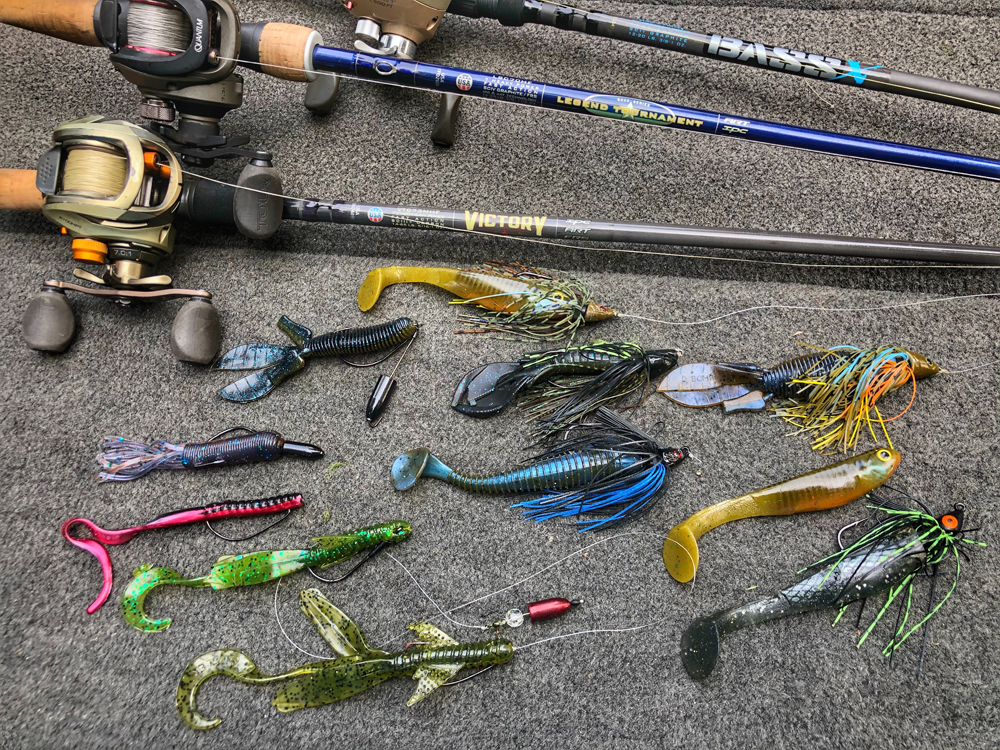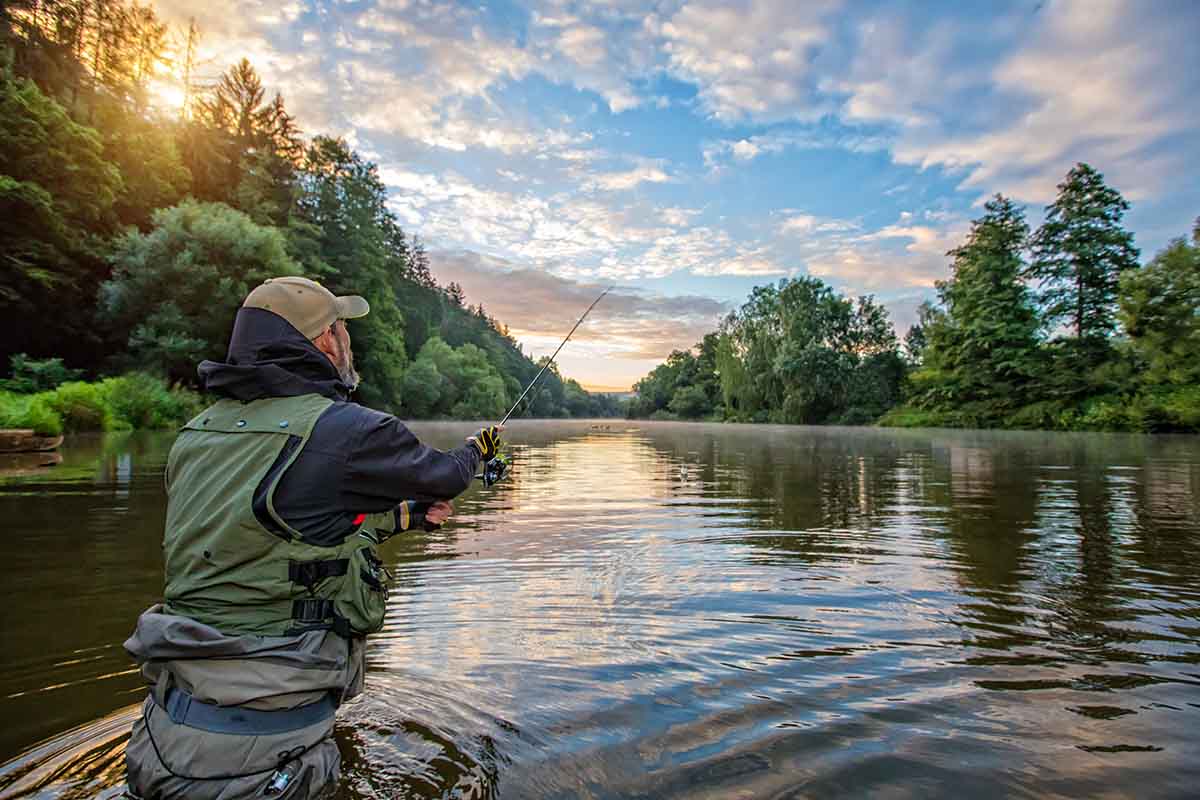Largemouth bass, the undisputed heavyweight champion of freshwater game fish in North America, ignites a passion in anglers of all experience levels. Their aggressive strikes, acrobatic leaps, and sheer power make every catch a memorable experience. But to consistently entice these cunning creatures, a deeper understanding of their behavior and a strategic approach are essential. This comprehensive guide delves into the world of largemouth bass, empowering you with the knowledge and techniques to unlock success on the water.
Decoding the Bass: A Behavioral Blueprint
Largemouth bass are environmental opportunists, adapting their behavior to seasonal changes and habitat features. Here’s a breakdown of key factors to consider:
- Seasonal Shifts:
- Spring: Spring paints the aquatic landscape with vibrant colors, and largemouth bass enter their spawning season. They move to shallow waters near structures like rocks, logs, and vegetation to build nests. During this period, lures that mimic their natural prey, such as worms and crawfish (soft plastics rigged Texas-style or Carolina-style), are highly effective.
- Summer: As the sun reigns supreme, water temperatures rise, and bass seek cooler depths. Early mornings and late evenings become prime fishing times as bass become more active in search of food. Utilize deep-diving crankbaits and jigs with soft plastic trailers to target these deeper-dwelling fish.

-
- Fall: With a crisp autumn chill in the air, bass enter a feeding frenzy to build fat reserves for the coming winter. They actively patrol shallow to mid-depth waters, targeting baitfish like shad and herring. Capitalize on this aggressive feeding behavior with spinnerbaits, crankbaits with realistic baitfish patterns, and swimbaits.
- Winter: Winter presents the ultimate test for anglers’ patience. Bass become lethargic in cold water, with minimal movement and reduced feeding activity. Downsize your lures and presentations. Jigs with finesse soft plastic trailers, small crankbaits, and slow-rolled spinnerbaits are more likely to entice bites during these quiet months.
- Habitat Preferences: Largemouth bass are masters of ambush. They gravitate towards areas with cover that provides them with a tactical advantage – submerged vegetation (weeds, lily pads), logs, rock piles, and man-made structures like docks and bridges. These areas offer both shelter and prime locations to launch surprise attacks on unsuspecting prey.
The Right Tools for the Job: Gearing Up for Success
Choosing the right equipment is paramount to maximizing your bass fishing success. Here’s a breakdown of the essential components:
- Rods:
- Power: A medium to medium-heavy power rod provides the backbone for solid hooksets and handling the fight of a large bass.
- Action: Fast action rods offer superior sensitivity and quicker hooksets, crucial for effective bass fishing.
- Length: A rod between 6.5 to 7.5 feet offers a good balance of casting distance and accuracy for most bass fishing situations.
- Reels:
- Baitcasting Reels: For experienced anglers, baitcasting reels provide exceptional control and power, especially when using heavier lures and lines. Look for reels with a high gear ratio (6:1 or higher) for fast retrieves.
- Spinning Reels: Ideal for beginners due to their ease of use, spinning reels are suitable for lighter lures and lines. Choose a reel with a smooth drag system and sufficient line capacity to handle bass runs.

- Lines:
- Monofilament: A good option for beginners due to its affordability, stretch, and ease of handling. Use 10-20 lb test line for most bass fishing situations.
- Fluorocarbon: Nearly invisible underwater, fluorocarbon offers superior sensitivity and abrasion resistance. It’s ideal for clear water conditions.
- Braided Line: Braided line provides unmatched strength and sensitivity with zero stretch. While excellent for heavy cover situations, it requires a fluorocarbon leader to reduce visibility to wary bass.
- Lures:
- Soft Plastics: A versatile weapon in any bass angler’s arsenal, soft plastics come in various shapes and sizes to mimic worms, crawfish, and creature baits. Rig them Texas-style or Carolina-style for weedless presentations or finesse techniques.
- Jigs: Effective year-round, jigs excel in heavy cover situations. Choose jigs with different head weights and pair them with soft plastic trailers for added attraction.
- Crankbaits: These hard-bodied lures allow you to cover water quickly and target different depths. Utilize shallow-running crankbaits in spring and summer, and deep-diving crankbaits in summer and fall.
- Spinnerbaits: Indispensable for murky water or areas with heavy vegetation, spinnerbaits create vibrations and flash that attract bass. Experiment with retrieve speeds to trigger strikes.
- Topwater Lures: Poppers, frogs, and buzzbaits come alive on the water’s surface, creating commotion and attracting aggressive strikes. They are particularly effective during low-light conditions like early mornings and late evenings when bass are more actively feeding near the surface.
Mastering the Art of the Cast: Techniques for Every Situation
Effective bass fishing goes beyond simply casting a lure. Mastering presentation and retrieval techniques is crucial for enticing bites:
- Casting and Retrieving:
- Accuracy: Precise casts are essential for placing your lure near bass hiding in cover. Practice pitching and flipping techniques to achieve pinpoint accuracy, especially when targeting bass in tight spaces.
- Retrieve Variation: Don’t settle for a monotonous retrieve. Experiment with different speeds and jerks to mimic the movement of fleeing prey or a struggling baitfish. Observe bass behavior and adapt your retrieve accordingly.
- Fishing Different Depths:
- Shallow Water: During spring and summer, target areas with abundant vegetation, lily pads, stumps, and other shoreline structures. Utilize topwater lures, spinnerbaits, and shallow-running crankbaits to entice bass lurking near the surface.
- Mid-Depths: Drop-offs, ledges, and points are prime locations to find bass suspended in mid-water. Jigs, soft plastics rigged on Carolina rigs, and medium-diving crankbaits are effective choices for targeting these areas.
- Deep Water: As summer progresses and water temperatures rise, or during winter months, bass may retreat to deeper parts of the lake or reservoir. Deep-diving crankbaits, Carolina rigs with heavy weights, and jigs with trailers become your allies in reaching these deeper-dwelling fish.
Adapting to the Elements: A Dynamic Approach
Understanding how external factors influence bass behavior is vital for consistent success:
- Weather: Overcast days and periods of low light often provide the best fishing conditions as bass become more active and less wary. Windy conditions can also stir up the water and activate feeding behavior. Adjust your techniques and lure selection accordingly.
- Water Clarity: In clear water, opt for natural-colored lures that blend seamlessly with the environment. In murky water, brighter colors and lures that create vibrations or noise can be more effective in attracting bass.

Beyond the Gear: The Unspoken Strategies
While equipment and technique are crucial aspects of bass fishing, there’s more to the equation:
- Environmental Awareness:
- Baitfish Activity: Observe the presence and movement of baitfish like shad or minnows. Bass often follow and feed on these smaller fish.
- Bird Behavior: Look for birds like herons or kingfishers hovering or diving near the water. They may be feeding on baitfish, indicating the presence of bass below.
- Water Temperature: Understanding water temperature plays a vital role in pinpointing bass location. Bass tend to be more active in warmer water and become sluggish in colder temperatures.
- Patience and Persistence:
Bass fishing can be a test of patience, especially when conditions are tough. Don’t get discouraged by a slow bite. Stay persistent, experiment with different techniques and locations, and eventually, you’ll find the bass.
- Maintaining Your Gear:
Regularly inspect your line for nicks and abrasions. Clean and lubricate your reels to ensure smooth operation. Store your equipment properly to prevent damage and ensure it’s ready for your next bass fishing adventure.

Robert Smith is the proud owner of Bait Barrels and Bows, a premier fishing sports store established in 1989. With over three decades of experience in the industry, Robert has honed his skills to become an expert angler, sharing his vast knowledge and passion for fishing with enthusiasts around the world. Through his store and writings, Robert provides invaluable tips and guidance, helping both novice and seasoned anglers improve their techniques and enjoy the sport to its fullest. His commitment to the fishing community is evident in his dedication to quality products and excellent customer service.

